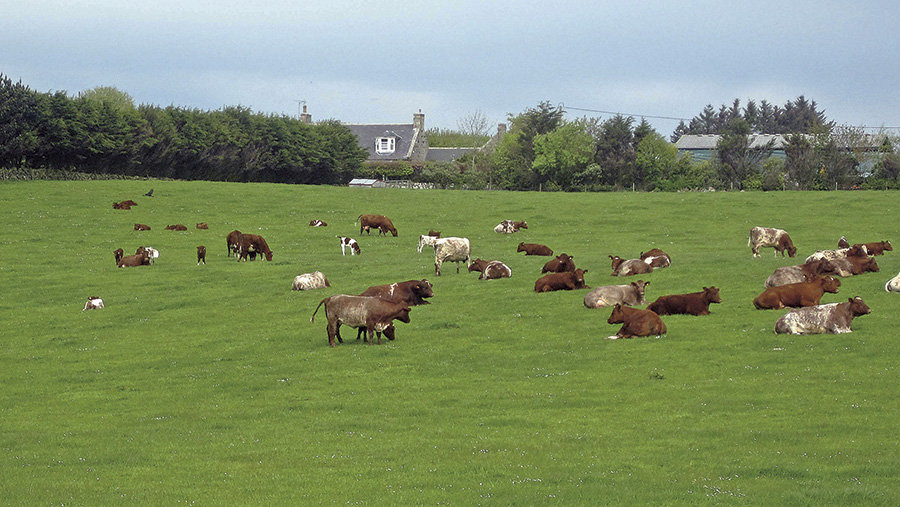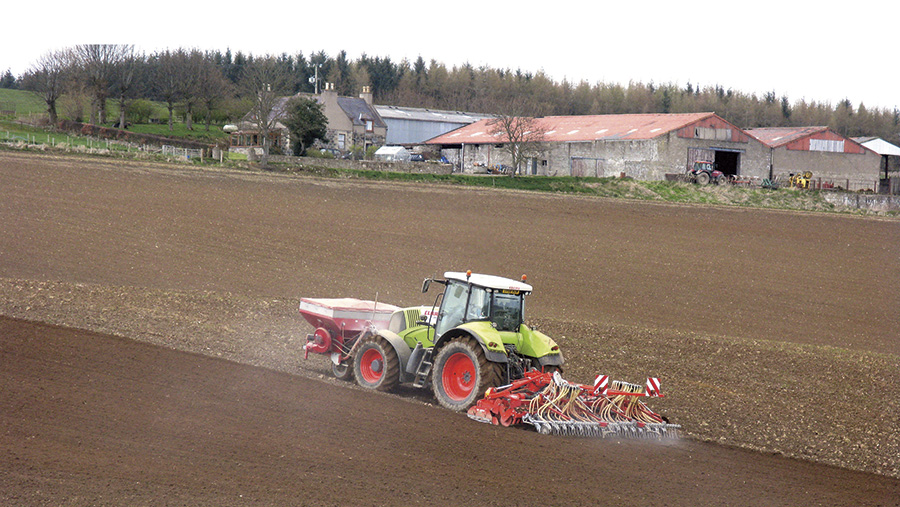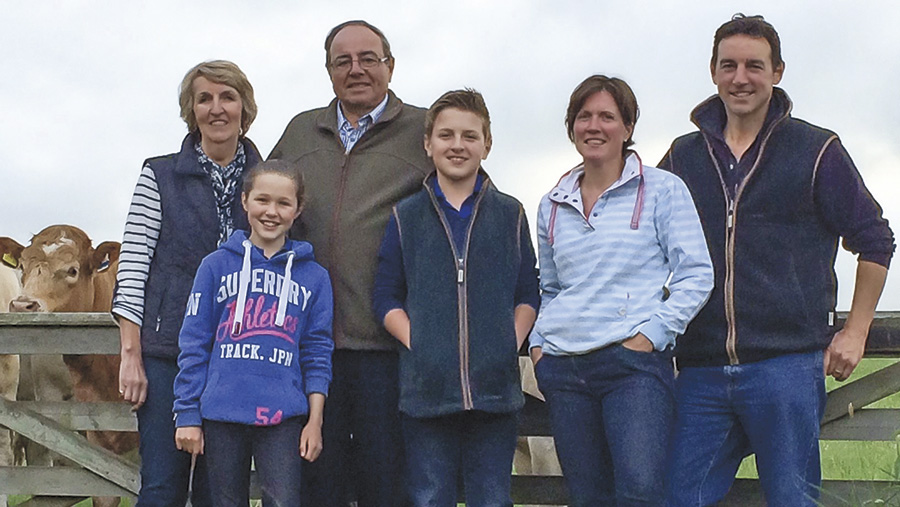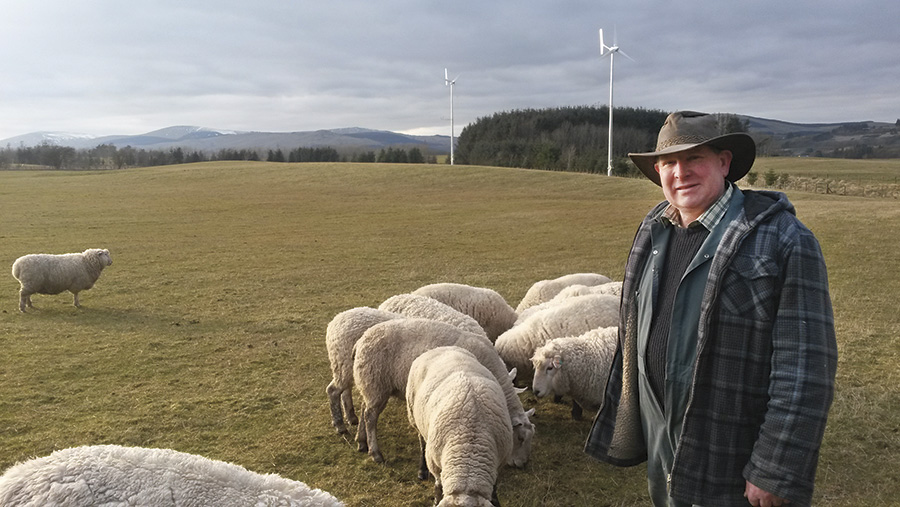Why moving farms to Scotland offers opportunity and value
Almost 50,000 people moved to Scotland from other parts of the UK last year.
This figure has been fairly consistent for the past two decades. Among the people migrating into the country has been a steady flow of farmers. It is difficult to predict how this might change in the light of the results of the EU referendum.

© Phil McLean/FLPA/Rex/Shutterstock
- Political support
- Grants and support funding
- Farm incomes
- Climate
- Value for money
- Case study: Move gives next generation a chance to farm
- Case study: ‘There is a huge appetite for beef cattle here’
The vote for a Brexit has changed the political landscape for the whole of the UK, but the ramifications could be even more complex in Scotland if it triggers a second vote for independence in a bid to keep Scotland within the EU.
But what has attracted farmers to make the move in recent years?
Political support
There has long been a perception that Scottish farming is buoyed by a more supportive government. This is perhaps because about 3% of Scotland’s workforce is employed in agriculture compared with 1.5% in the UK as a whole.
The sector also accounts for 1.5% Scotland’s GDP compared with 0.6% across the UK, thanks to the strength of Scottish food exports, which smashed the £1bn mark for the first time in 2015.
Agriculture has been given a higher profile in political circles since devolution, says Rob Livesey, NFU Scotland vice-president.
“The Scottish parliament has made good decisions for farming on the whole, such as keeping CAP modulation down to 9.5% compared with England’s 12% and Wales’ 15%,” he explains. This has meant farmers have ended up in direct control of more BPS funding.
About 85% of Scottish farmland has less-favoured area (LFA) status compared with 15% in England. Holyrood has recognised the importance of keeping farming on the hills, but exercising its right under EU law to use coupled payments for beef and sheep producers, says Mr Livesey.
“It has also fought hard for a fairer share of the UK CAP budget for Scotland’s farmers in arguing the case for convergence money,” he says.
However, some recent decisions have caused concern, he adds.
The Scottish government is pressing ahead with land reforms that put pressure on landowners and encourage greater community ownership of land, with a target to double the amount of community-owned land to 2.47m acres by 2020.
“Delivery of CAP money, dogged by technology problems and difficulties in moving from an historic to an area-based Basic Payment Scheme, has also been poor,” says Mr Livesey.
Grants and support funding
BPS payments in Scotland reflect the dominance of LFA land and are currently categorised under three payment bands:
Region 1 Best pasture and arable land – €220/ha (£174/ha) including a greening payment
Region 2 Rough grazing but not severely disadvantaged – €35/ha (£28/ha)
Region 3 Large areas of severely disadvantaged land – €10/ha (£8/ha).
There are also financial incentives for beef and sheep on poorer land. On the mainland, beef calves attract a €100 a head (£80) payment which rises to €160 a head (£126) for island farms.
Upland sheep farms can get coupled payments of €65 a ewe hogg (£51). The main provisos are they have to be on Region 3 category land between 17 October and 31 March and the farm has less than 495 acres of land in Region 1.
There are also a number of grants to help farmers get started and a less bureaucratic approach, says Strutt & Parker’s head of farming in Scotland, Mary Munro.
Young farmers can currently apply for a start-up grant worth up to €70,000 (£55,000) to be used as working capital, available for their first 18 months of farming. New entrants can also secure a capital grant of €32,000 (£25,000) to help buy equipment.
“There is a lot of competition for this [scheme] and it is only available to genuine new entrants, but there is no rule to say it is for people born in Scotland,” says Ms Munro.
The Small Farms Grant Scheme funds small-scale producers and growers to improve their holdings and help sustain their businesses.
This scheme pays up to £25,000 to individuals in any two-year period or £125,000 for groups of farmer applicants.
Other start-up funding can be accessed through the Food Processing, Marketing and Co-operation scheme, while a broadband initiative helps communities co-ordinate demand for online access.
Farm incomes
The effect of coupled support is yet to be reflected in incomes, but it is worth considering that farm business income (FBI) has tended to be lower in Scotland.
In 2014-15 the average FBI in Scotland was £23,000 compared with £39,000 in England.
This was lower than usual due to the wider farmgate price crisis, although incomes in Scotland fell slightly less than in England compared with the previous year – down 26% compared with a 29% drop in England.
Farm business income data 2014-15 (£) |
||
| Farm type | Scotland | England |
| Cereals | 16,000 | 45,000 |
| General cropping | 27,000 | 52,500 |
| Dairy | 68,000 | 83,800 |
| Grazing (LFA) | 26,000 | 14,600 |
| Mixed | 12,000 | 21,500 |
| Diversifications | 15,000 | 9,000 |
| CAP (including greening) | 31,000 | 28,300 |
| Overall | 23,000 | 39,000 |
|
Source: Scottish government/Defra |
||
Climate
Farmers considering moving to Scotland should think about how the colder, wetter conditions will affect their operations, says Mr Livesey.
“While the eastern side of Scotland is not that different to parts of England, the further north you go, the longer and darker the winters become.
“That can be difficult for some people to cope with mentally and have a big practical effect on the [farming] system.”
For example, livestock housing has to be more robust in places to withstand the risk of heavy snow, so construction costs can be higher.
Extra livestock building space may also be needed to house animals much longer from the beginning of October to as late as the end of May.
Arable operations too require a different mindset. “Wheat harvest is usually into the first week of September and drying costs are higher. The next crop has to go in immediately,” says Mr Livesey.
“The summer is shorter, but the day length is longer than in England, so the window to get things done is tight and it is a much more pressured time than the harvest period in the south of the UK,” he says.
Climate: Scotland v England |
|||
| West Scotland | East Scotland | Central England | |
| Sun hours/year | 1,100 | 1,400 | 1,600 |
| Rainfall | 2,000mm | 780mm | 650mm |
| Rain days/year | 250 | 150 | 115 |
| Winter temperatures (night & day average) | 5C | 2.5C | 6C |
| Summer temperature (daytime only) | 18C | 18C | 22C |
|
Source: Met Office |
|||
Value for money
“You definitely get more for your money in Scotland than you do in England,” says Ms Munro, “either a bigger quantity or better quality of land for the same price.”
The process of buying is very similar to England’s, she adds.
“It is sometimes assumed that an offer accepted in principle in Scotland is binding, but in fact the offer is not legally binding until missives are concluded [as in England].
“Gazumping is extremely rare in Scotland, however, as vendors follow an unwritten ethical code of conduct when accepting offers, and if a sale falls through it is much more likely to be because the purchaser has withdrawn for some reason.
The pace of life is also slower, says Ms Munro. “There is less encroachment from the urban sprawl, which is concentrated in the central belt of Scotland. About 80% of Scotland is classed as rural.”
This means there is less pressure on housing in rural areas and land and property prices are significantly lower.
Average land values £/acre: Scotland v England
|
||||
| Pasture | Arable | |||
| Year | Scotland | England | Scotland | England |
| 2010 | 2,243 | 5,151 | 4,333 | 6,030 |
| 2011 | 2,328 | 7,198 | 4,490 | 7,023 |
| 2012 | 2,304 | 5,998 | 4,929 | 7,761 |
| 2013 | 2,338 | 6,490 | 5,589 | 8,684 |
| 2014 | 2,815 | 7,066 | 6,841 | 9,959 |
| 2015 | 2,366 | 7,587 | 6,892 | 10,082 |
|
Source: Strutt and Parker |
||||
How far could your money go?
Budget: £500,000
Finedon, Northampton, £500,000
About 82 acres of grade 3 level grassland with road frontage. No entitlements included in the sale.
Stonypath Farm, Peeblesshire, £500,000

Stonypath Farm
About 794 acres of ring-fenced pasture and upland grazing with eight large farm buildings from modern steel portal framed design, to traditional brick and slate roof construction.
Budget: £1m
Winbow Farm, Devon, £950,000
About 56 acres of arable, pasture and woodland, a range of outbuildings and a five-bedroom farmhouse with a two bedroom annexe.>
Balmedie Farm, Belhelvie, Aberdeen, £1,090,000

Balmedie Farm
A traditional productive lowland arable and livestock farm with 164.95 acres of Grade 3 land, eight miles from Aberdeen. It includes a three-bedroom farmhouse, a water mill, 18 farm buildings and planning permission for three large houses.
Budget: £2m
Belcher’s Lodge Farm, Horninghold, Leicestershire, £1,600,000
A 186-acre parcel of bare land, comprising a mix of arable, permanent pasture and woodland. Let on a farm business tenancy that can be terminated by Michaelmas 2017.
East Cruichie Farm, Aberdeenshire, offer more than £1,705,000

East Cruichie Farm
A 333-acre productive arable and stock farm with three houses and a range of portal-frame buildings. Includes nine large buildings with 153 standard entitlements generating circa €51,270 (£40,618), a grain store, farmhouse and cottage.
Move north gives tenant’s son a chance to farm

The Parrish family
Deryk Parrish is an organic arable, beef and sheep producer who moved to Scotland in 1990 from a 650-acre arable farm in Bedfordshire.
He had farmed with his brother but the business couldn’t support both of them and their growing families.
“My son, who was 17 at the time, had an ambition to farm, so I looked for a tenancy to give him a chance. The only farm in England that came close to our budget was a 500-acre farm in Somerset. But it was poor-quality pasture.”
So Mr Parrish looked to Scotland. Mr Parrish and his son Robert took over Hassendeanburn Farm, near Hawick, in the Scottish Borders, on a limited partnership tenancy before buying 100 acres of their own.
The farm grows 200 acres of organic winter oats and barley and has 200 beef cattle and 1,000 ewes on 450 acres of pasture land.
“We have more land, of a better quality, for almost one-third less than the Somerset farm.
“The main difficulties in moving were leaving our family and friends and adapting to the different growing conditions,” he recalls.
“Help from our landlady and the warmth and advice from our new neighbours were the key to success for us,” he said and advises anyone considering a move to integrate with the local community.
He also says farmers moving have to accept growing conditions will be more difficult.
“On average it’s about 4C lower up here than it was in Bedfordshire and it rains a lot [1,742mm/year].
“Cereals come in at 20% moisture. If you expect to get 16% and you wait, you will get caught out.”
He estimates drying grain probably costs £6/t more, but he saves £200/ha on weed control because there is no blackgrass problem in the area.
Mr Parrish and his son also get a 100% premium on their oats over conventionally grown crops.
“Our malting barley also has a premium and a ready outlet as the processors favour the Scottish crop. The cattle we finish also command a premium because it is sold as Scotch Beef,” he says.
The farm receives an organic maintenance payment of €50/ha (£40).
‘There is a huge appetite for beef cattle here’

Colin Dawes
Scotland’s strong livestock industry and slower pace of life are what attracted Colin and Di Dawes and their children Rebecca and Stuart to move from Oxfordshire in March 2013.
The family’s 380-acre mixed beef, sheep and arable farm had a busy farm shop and butchery, which became bigger than they had anticipated, attracting up to 70,000 visitors annually and employing five full-time members of staff.
Mr Dawes found he spent more time in the office than on the farm. “The farm shop had got out of hand and got very big and was a lot of stress on the family,” says Mr Dawes. “I was sat in the office, thinking: ‘What am I doing stuck in here?’,” he says.
“Once we decided to sell, we wanted to go somewhere more livestock oriented and get back to traditional farming.”
The family sold their Grade 3 farm property and moved into a rented house near Didcot for six months. They sold their 600 sheep, but continued to keep some cattle locally and put their machinery in a friend’s store.
After initially considering farms in the West Country, they moved into their new home near the Crook of Devon in Kinross – a 365-acre stock farm capable of growing cereals.
The family brought 20 of their Lincoln Red-cross cows with them, plus 20 in-calf heifers. They also bought 270 ewes from the farm’s previous owner.
“I wanted cattle I knew when coming to a new place,” says Mr Dawes. All had to be tested for TB before and after transporting across the border.
Now the farm supports 50 cows and 50 followers and stores, plus 700 Romney ewes and Mr Dawes and his son are gradually building their stock up.
A couple of wind turbines also provide rental income.
From a business perspective Scotland is much better suited to livestock, says Mr Dawes. There are more outlets for stores, he has two ABP abattoirs nearby, it is easier to buy stock and the markets are normally buzzing into the evening.
A lack of TB also makes things easier and there is a huge appetite for beef cattle, with strong demand for Aberdeen Angus beef.
He will soon receive a less-favoured area payment and £32/calf from Scotland’s Beef Efficiency Scheme, which Holyrood has launched to help improve the genetics of the country’s herd.
Although beef cattle prices command a premium above those south of the border, Mr Dawes says this doesn’t make a huge difference, although it does help put a floor in the market.
A strong farming community has also made it easy to settle and the sector is better recognised by the general public. “Every paper you pick up in Scotland has a farming page,” he says.
“The weather is also never as bad as you think and the long nights in summer are nice. Less traffic here is a big difference too.
“It’s fine if you come with an open mind,” he says.
